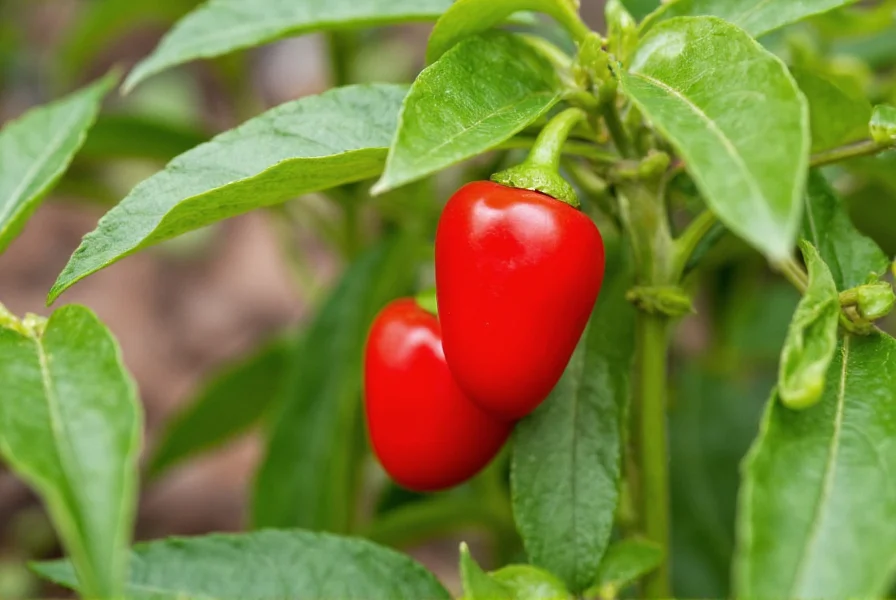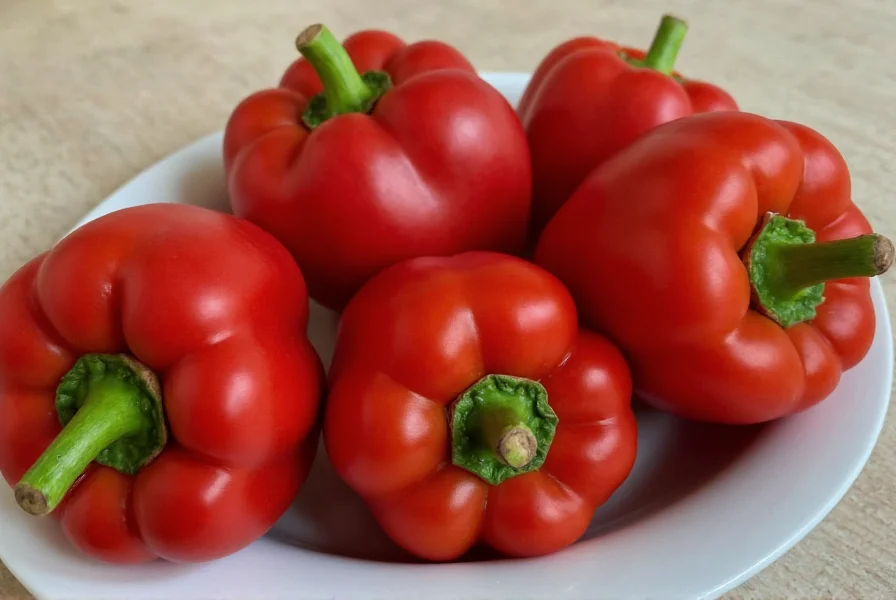When exploring unique pepper varieties for your garden or kitchen, few offer the perfect balance of flavor, versatility, and ease of cultivation like the Jimmy Nardello pepper. This heirloom sweet pepper variety has gained devoted followers among both home gardeners and professional chefs for compelling reasons. Understanding its distinctive characteristics helps you maximize its potential in your culinary creations and garden planning.
Distinctive Characteristics of Jimmy Nardello Peppers
Jimmy Nardello peppers stand out with their elegant, elongated shape—typically reaching 6-9 inches in length with a slender, tapered form. Unlike many bell peppers, they feature remarkably thin walls that make them exceptionally suitable for frying and roasting. The peppers begin as a deep green and gradually transform to a brilliant, glossy red as they mature on the vine.
What truly distinguishes Jimmy Nardello peppers is their flavor profile. They offer a complex sweetness with subtle fruity notes and virtually no heat (0-500 Scoville units), placing them firmly in the sweet pepper category. This makes them accessible to those who prefer milder flavors while still providing depth that enhances various dishes. Their thin skin and minimal seeds contribute to their culinary appeal, requiring less preparation than thicker-walled varieties.

Historical Background and Origin
The Jimmy Nardello pepper carries a fascinating story that connects two continents. Originating in the Basilicata region of southern Italy, this heirloom variety was brought to the United States in the late 19th century by Italian immigrants. The pepper gained its name from Jimmy Nardello, whose family preserved and shared these seeds through generations in Connecticut.
Unlike many commercial pepper varieties developed for shipping durability, Jimmy Nardello peppers represent traditional Italian culinary heritage. Seed savers and heirloom enthusiasts have helped preserve this variety, which might otherwise have disappeared from cultivation. Its continued popularity demonstrates how food traditions can cross generations and geographical boundaries while maintaining distinctive qualities.
Growing Requirements and Garden Performance
For gardeners interested in cultivating Jimmy Nardello peppers, understanding their growing requirements ensures optimal results. These peppers thrive in warm conditions with full sun exposure (at least 6-8 hours daily) and well-draining soil enriched with organic matter. Like most peppers, they require consistent moisture but dislike waterlogged conditions.
| Growing Aspect | Requirements for Jimmy Nardello Peppers |
|---|---|
| Days to Maturity | 65-80 days from transplant |
| Soil pH | 6.0-6.8 |
| Temperature Range | 70-85°F (21-29°C) |
| Plant Spacing | 18-24 inches apart |
| Yield Per Plant | 20-30 peppers under optimal conditions |
Starting seeds indoors 8-10 weeks before your last frost date gives these peppers the long growing season they require. Once established, Jimmy Nardello plants typically reach 2-3 feet in height with a bushy growth habit. The plants produce abundant yields of peppers that mature from green to red over several weeks, allowing for staggered harvesting. Their productivity makes them excellent candidates for container gardening as well as traditional garden beds.
Culinary Applications and Flavor Pairings
The culinary versatility of Jimmy Nardello peppers explains their popularity among chefs and home cooks. Their thin walls and minimal seeds mean they cook quickly and evenly, making them perfect for Italian preparations like peperonata—a traditional sweet and sour pepper stew. When sliced and fried until tender-crisp, they develop a wonderful caramelized flavor that enhances sandwiches, pasta dishes, and antipasto platters.
Professional chefs particularly value Jimmy Nardello peppers for their ability to maintain texture when cooked while still delivering robust flavor. They work beautifully in roasted vegetable medleys, stuffed pepper preparations, and as pizza toppings. The peppers' natural sweetness complements tomatoes, garlic, olive oil, and fresh herbs like basil and oregano. For preservation enthusiasts, Jimmy Nardello peppers excel when roasted and preserved in oil, creating a versatile condiment that captures summer flavors for year-round enjoyment.

Preservation Techniques for Long-Term Enjoyment
One of the most valuable aspects of growing Jimmy Nardello peppers is their excellent preservation qualities. Their thin walls and high sugar content make them particularly well-suited for several preservation methods. Roasting and freezing represents one of the simplest approaches—simply roast the peppers until blistered, remove skins if desired, and freeze in airtight containers for use throughout the winter months.
For those interested in traditional Italian preservation methods, Jimmy Nardello peppers shine when prepared sott'olio (under oil). After roasting and peeling, the peppers are packed in sterilized jars with garlic, herbs, and high-quality olive oil. This method creates a flavorful condiment perfect for antipasto platters or as a pizza topping. The peppers also dry exceptionally well—either by hanging whole peppers in a warm, dry location or by slicing and using a food dehydrator. Dried Jimmy Nardello peppers can be reconstituted for cooking or ground into a flavorful, mild pepper flakes alternative.
Comparing Jimmy Nardello to Similar Pepper Varieties
While several sweet pepper varieties exist, Jimmy Nardello peppers offer distinctive qualities that set them apart. Compared to standard bell peppers, they feature thinner walls, more complex flavor, and superior performance in cooked applications. Unlike Cubanelle peppers (which share some visual similarities), Jimmy Nardellos typically have a sweeter profile and more consistent shape.
When contrasted with other Italian frying peppers like the Italian Long Horn, Jimmy Nardello peppers generally demonstrate better disease resistance and higher yields in home garden settings. Their heat level places them firmly in the sweet category, unlike Calabrian peppers which offer noticeable heat. Gardeners seeking a reliable, flavorful sweet pepper for cooking applications often find Jimmy Nardello superior to many commercially available varieties that prioritize shipping durability over flavor.
Where to Source Authentic Jimmy Nardello Seeds
For gardeners wanting to grow authentic Jimmy Nardello peppers, selecting quality seeds from reputable sources ensures you receive the true heirloom variety. Several specialty seed companies dedicated to preserving heirloom varieties offer certified Jimmy Nardello seeds. Look for companies that provide detailed growing information and maintain seed purity through proper isolation practices.
When purchasing seeds, check for germination rates and harvest dates to ensure you're getting fresh, viable seeds. Some seed catalogs provide additional information about the specific lineage of their Jimmy Nardello seeds, which can be valuable for those interested in the historical aspects of this variety. Local seed swaps and gardening clubs sometimes offer opportunities to obtain seeds directly from experienced growers who have cultivated this variety for multiple seasons.
Frequently Asked Questions
How hot are Jimmy Nardello peppers on the Scoville scale?
Jimmy Nardello peppers register between 0-500 Scoville Heat Units, placing them firmly in the sweet pepper category with no noticeable heat. This makes them ideal for those who prefer flavorful peppers without spiciness.
What's the best way to use Jimmy Nardello peppers in cooking?
Their thin walls make Jimmy Nardello peppers perfect for frying, roasting, and preserving. They excel in Italian preparations like peperonata, as pizza toppings, in antipasto platters, and when roasted and preserved in olive oil. Their sweet flavor also works well in stuffed pepper recipes and vegetable medleys.
How long does it take for Jimmy Nardello peppers to mature?
Jimmy Nardello peppers typically require 65-80 days from transplant to reach maturity. They begin as green peppers and gradually turn to a vibrant red as they mature. The plants produce peppers over an extended period, allowing for multiple harvests throughout the growing season.
Can Jimmy Nardello peppers be grown in containers?
Yes, Jimmy Nardello peppers adapt well to container gardening. Use a pot at least 12-14 inches in diameter with good drainage. Container-grown plants may require more frequent watering and feeding than garden-grown plants, but they can produce abundant yields when provided with adequate sunlight and proper care.
How do Jimmy Nardello peppers compare to Cubanelle peppers?
While both are sweet Italian frying peppers, Jimmy Nardello peppers typically have thinner walls, a sweeter flavor profile, and more consistent tapered shape compared to Cubanelles. Jimmy Nardellos also tend to have higher yields and better disease resistance in home garden settings, making them preferred by many gardeners for cooking applications.











 浙公网安备
33010002000092号
浙公网安备
33010002000092号 浙B2-20120091-4
浙B2-20120091-4